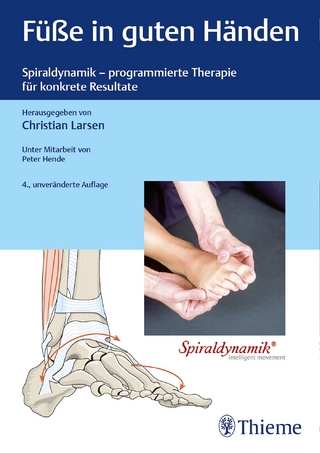
Biomaterials Science and Engineering
Kluwer Academic / Plenum Publishers (Verlag)
978-0-306-41689-7 (ISBN)
- Titel ist leider vergriffen;
keine Neuauflage - Artikel merken
Bingham, D. R. Clarke, J. P. Davies, M. F. DeMane, B. J. Kelly, K. W. Markgraf, N. N. Salman, W. J. Whatley, and S. o. Young; and my colleagues, Drs. W. Cooke, D. D. Moyle (Clemson G. H. Kenner (University of Utah), F. University), W. C. Van Buskirk (Tulane University), and Y.
1 Introduction.- 1.1. Definition of Biomaterials.- 1.2. Brief Historical Background.- Problems.- References.- 2 Characterization of Materials.- 2.1. Mechanical Properties.- 2.1.1. Atomic Bonding and Elasticity (Hooke's Law).- 2.1.2. Mechanical Property Measurements.- 2.2. Viscoelasticity.- 2.3. Viscoelasticity in Dynamics Tests.- 2.4. Elasticity of Non-Hookean Materials.- Problems.- References.- 3 Structure of Solids.- 3.1. Atomic and Molecular Bonding.- 3.1.1. Primary Bonding.- 3.1.2. Secondary Bonding.- 3.2. Crystal Structure of Solids.- 3.3. Crystal Imperfections.- 3.3.1. Point Defects.- 3.3.2. Line Defects (Dislocations).- 3.3.3. Grain Boundaries.- 3.4. Noncrystalline Solids.- 3.4.1. Long-Chain Molecular Compounds.- 3.4.2. Network Structures.- Problems.- References.- 4 Thermodynamics of Structural Changes.- 4.1. Thermodynamic Relationships.- 4.1.1. Energy, Enthalpy, and the First Law of Thermodynamics.- 4.1.2. Entropy and the Second Law of Thermodynamics.- 4.1.3. Free Energies: The Thermodynamic Potentials.- 4.2. Rates of Reactions.- 4.3. Phase Changes.- 4.3.1. Single-Component Systems: Allotropy.- 4.3.2. Composition and Phase Stability.- 4.3.3. Mechanism of Phase Changes.- 4.3.4. Time-Temperature Transformation of Steel.- 4.4. Diffusion.- 4.5. Surface Properties.- 4.5.1. Surface Tension.- 4.5.2. Surface Tension Measurements of Solids.- Problems.- References.- 5 Strength and Strengthening Mechanisms.- 5.1. Strengths of Perfect and Real Materials.- 5.2. Strength and Strengthening of Metals and Simple Ionic Solids.- 5.2.1. Deformation of Crystalline Solids.- 5.2.2. Energetics of Dislocations.- 5.2.3. Dislocation Movement.- 5.2.4. Strengthening of Metals and Simple Ionic Solids.- 5.3. Strength and Strengthening of Ceramics and Glasses.- 5.3.1. Griffith Theory of Brittle Fracture.- 5.3.2. Strengthening of Ceramics and Glasses.- 5.4. Strength and Strengthening of Polymers.- 5.4.1. Strength of Polymers.- 5.4.2. Strengthening of Polymers.- 5.5. Properties of Composites.- Problems.- References.- 6 Structure-Property Relationships Of Biological Materials.- 6.1. Structure of Proteins and Polysaccharides.- 6.1.1. Proteins.- 6.1.2. Polysaccharides.- 6.2. Structure-Property Relationship of Tissues.- 6.2.1. Mineralized Tissue (Bone and Teeth).- 6.2.2. Collagen-Rich Tissues.- 6.3. Elastic Tissues.- 6.3.1. Composition and Structure.- 6.3.2. Properties of Elastic Tissues.- 6.4. Constitutive Equations Describing Mechanical Properties of Soft Tissues.- 6.4.1. Stress-Strain Relationship in Loading and Unloading.- 6.4.2. Strain Energy Function.- 6.4.3. Contribution of Collagen, Elastin, and Mucopolysaccharide to the Mechanical Properties of Soft Tissues.- Problems.- References.- 7 Tissue Response to Implants (Biocompatibility).- 7.1. Wound-Healing Process.- 7.1.1. Inflammation.- 7.1.2. Cellular Response to Repair.- 7.2. Body Response to Implants.- 7.2.1. Cellular Response to Implants.- 7.2.2. Systemic Effects of Implants.- 7.3. Blood Compatibility.- 7.3.1. Factors Affecting Blood Compatibility.- 7.3.2. Nonthrombogenic Surfaces.- Problems.- References.- 8 Metallic Implant Materials.- 8.1. Stainless Steels.- 8.1.1. Types of Composition of Stainless Steels.- 8.1.2. Properties of Stainless Steels.- 8.1.3. Manufacturing of Implants Using Stainless Steels.- 8.2. Co-Based Alloys.- 8.2.1. Types and Composition of Co-Based Alloys.- 8.2.2. Properties of Co-Based Alloys.- 8.2.3. Manufacturing of Implants Using Co-Based Alloys.- 8.3. Ti and Ti-Based Alloys.- 8.3.1. Composition of Ti and Ti-Based Alloys.- 8.3.2. Structure and Properties of Ti and Ti-Based Alloys.- 8.3.3. Manufacturing of Implants Using Ti-Based Alloys.- 8.4. Other Metals.- 8.5. Deterioration of Metallic Implant Materials.- 8.5.1. Electrochemical Principles of Corrosion.- 8.5.2. Rates and Passivity of Corrosion.- 8.5.3. Corrosion Fatigue.- Problems.- References.- 9 Ceramic Implant Materials.- 9.1. Aluminum Oxides.- 9.2. Hydroxyapatite.- 9.2.1. Structure of Hydroxyapatite.- 9.2.2. Properties of Hydroxyapatite.- 9.2.3. Manufacture of Hydroxyapatite.- 9.3. Glass-Ceramics.- 9.3.1. Formation of Glass-Ceramics.- 9.3.2. Properties of Glass-Ceramics.- 9.4. Other Ceramic Implants.- 9.5. Carbons.- 9.5.1. Structure of Carbons.- 9.5.2. Properties of Carbons.- 9.5.3. Manufacture of Carbon Implants.- Problems.- References.- 10 Polymeric Implant Materials.- 10.1. Polymerization.- 10.1.1. Condensation Polymerization.- 10.1.2. Addition or Free Radical Polymerization.- 10.2. Solid State of Polymers.- 10.3. Effect of Structural Modifications on Properties.- 10.3.1. Effect of Molecular Weight and Composition.- 10.3.2. Effect of Side Chain Substitution, Cross-Linking, and Branching.- 10.4. Polyolefins.- 10.4.1. Structure and Properties of Polyethylene.- 10.4.2. Polypropylene.- 10.5. Polyamides (Nylons).- 10.6. Acrylic Polymers.- 10.6.1. Structure and Properties of Acrylics and Hydrogels.- 10.6.2. Bone Cement (PMMA).- 10.7. Fluorocarbon Polymers.- 10.8. Rubbers.- 10.8.1. Natural and Synthetic Rubbers.- 10.8.2. Silicone Rubbers.- 10.9. High-Strength Thermoplastics.- 10.10. Deterioration of Polymers.- 10.10.1. Chemical Effects.- 10.10.2. Sterilization Effects.- 10.10.3. Mechanochemical Effects.- 10.10.4.In VivoEnvironmental Effects.- Problems.- References.- 11 Soft Tissue Replacement Implants.- 11.1. Sutures, Surgical Tapes, and Adhesives.- 11.1.1. Sutures.- 11.1.2. Surgical Tapes.- 11.1.3. Tissue Adhesives.- 11.2. Percutaneous and Skin Implants.- 11.2.1. Percutaneous Devices.- 11.2.2. Artificial Skins.- 11.3. Maxillofacial and Other Soft Tissue Augmentation.- 11.3.1. Maxillofacial Implants.- 11.3.2. Ear and Eye Implants.- 11.3.3. Fluid Transfer Implants.- 11.3.4. Space-Filling Soft Tissue Implants.- 11.4. Blood Interfacing Implants.- 11.4.1. Vascular Implants.- 11.4.2. Heart Valve Implants.- 11.4.3. Heart Assist Devices.- 11.4.4. Artificial Organs.- Problems.- References.- 12 Hard Tissue Replacement Implants.- 12.1. Internal Fracture Fixation Devices.- 12.1.1. Wires, Pins, and Screws.- 12.1.2. Fracture Plates.- 12.1.3. Intramedullary Devices.- 12.1.4. Spinal Fixation Devices.- 12.1.5. Fracture Healing by Electrical and Electromagnetic Stimulation.- 12.2. Joint Replacements.- 12.2.1. Hip Joint Replacements.- 12.2.2. Knee Joint Replacements.- 12.2.3. Ankle Joint Replacements.- 12.2.4. Shoulder Joint Replacements.- 12.2.5. Elbow Joint Replacements.- 12.2.6. Wrist Joint Replacements.- 12.2.7. Finger Joint Replacements.- 12.3. Dental Implants.- 12.3.1. Endosseous Tooth Implants.- 12.3.2. Subperiosteal and Staple/Transosteal Implants.- Problems.- References.- APPENDIX A: PHYSICAL CONSTANTS.- APPENDIX B: SI UNITS.- ANSWERS TO PROBLEMS.- NAME INDEX.
| Erscheint lt. Verlag | 31.10.1984 |
|---|---|
| Zusatzinfo | 183 black & white illustrations, biography |
| Verlagsort | Dordrecht |
| Sprache | englisch |
| Gewicht | 818 g |
| Themenwelt | Medizin / Pharmazie ► Physiotherapie / Ergotherapie ► Orthopädie |
| Technik ► Medizintechnik | |
| ISBN-10 | 0-306-41689-1 / 0306416891 |
| ISBN-13 | 978-0-306-41689-7 / 9780306416897 |
| Zustand | Neuware |
| Haben Sie eine Frage zum Produkt? |
aus dem Bereich


